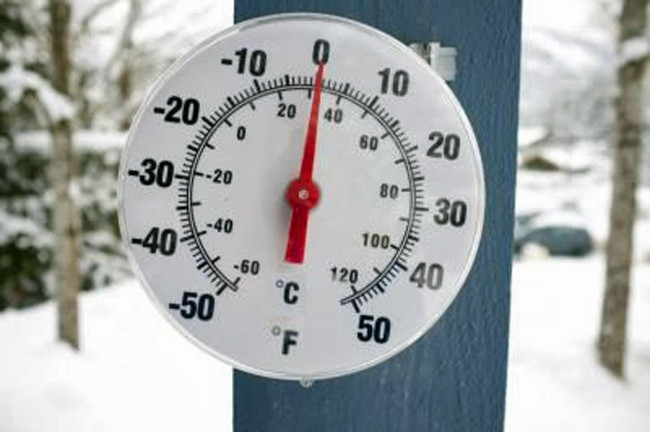Today it is cold at 0 degrees, twice as cold tomorrow, how much will the temperature be?
At first glance, this question is quite simple, but surely, you will not be able to immediately respond immediately.
The problem is short and concise but extremely uncomfortable:
Today it is cold at 0 degrees C, twice as cold tomorrow, how much will the temperature be?
This is one of the world's classic quiz questions, the first time it was officially released on a website, at the end of April 1999 at Mathforum.org (a forum for math lovers. learn).

0K level is considered to be the smallest temperature that material can achieve.(Illustration).
When it appeared, thousands of people were excited to try it, so far, different answers have been made continuously. And the most accurate answer is still:
The temperature of day 1 is 0 degrees Celsius, then we cannot do calculations to deduce the 2nd day. But on the other hand, from that data, we can completely convert into equivalent temperature scales.
If Celsius (Celsius) is being widely used all over the world and gradually replacing the previous F-scale, then the K scale (Kevin) is considered the basic unit of temperature. .
The temperature in the Kevin heat ladder is also called the absolute temperature . In which 0K level is considered to be the smallest temperature that material can reach, where all the thermal movement of the material stops completely.
In other words, at 0K or 0 degrees Kevin, every movement of the atom (which forms matter) stops. In order for them to move, we have to provide heat, which also means that the atom gets warmer.
When the atom reaches 273.15K, it is equivalent to 0 degrees Celsius. From here, each degree of increase or decrease of degree K is equivalent to an increase or decrease of 1 degree centigrade.
Back to the above problem, when the first day temperature is 0 degrees Celsius, the second day is twice that, then we can understand that equivalent to:
0 degrees C = 273.15 degrees K
Twice as cold as: 273.15 degrees K / 2 = 136,575 degrees K
136,575 degrees K ~ minus 136,575 degrees Celsius
In fact, this temperature is much lower than the coldest record ever recorded (negative 89 degrees C, measured in Vostok, Antarctica on July 21, 1983).
Is that the most accurate answer?
In fact, it is only the answer that is most widely recognized and agreed. In addition, there may still be other answers if we do the same method but convert it into degrees F (degrees Fahrenheit), not degrees K .

The coldest record ever recorded was -89 degrees in Vostok, Antarctica.
On the other hand, many people also believe that, as can be seen, asking such questions is not tight and objective. How cold it is is supposed to be the feeling of each person, or more precisely it depends on the heat loss of the body to the surrounding environment.
From this understanding, we can see that double cooling also depends on subjective feeling, not entirely from objective environment.
Moreover, the temperature scales such as Celsius, Kevin or even Fahrenheit are relative standards. They are not as clear as long meters or weight to be comparable in double or triple form.
Perhaps for that reason, for the past 18 years, since 1999, no one or any mathematician has been able to confirm that his answer is the most accurate.
- Pick up a new cold air, the sky is cold from the afternoon tomorrow
- Tomorrow, the North is very cold, with hail
- Strong cold air rushed back, the North decreased 5 degrees
- Cold air rushed in, the North transferred rain from tonight
- Cold air rushed to cause cold rain for the North from tomorrow
- Cold, damaging cold, north of the temperature down 5 degrees Celsius
- The North is cold, the mountain temperature is 3 degrees Celsius
- Northern tomorrow night thunderstorms, hot sunshine ended
- The two countries have terrible temperature differences: nearly 100 degrees Celsius
- How will the body change when the temperature drops to 10 degrees Celsius?
- You used to cold 22 degrees Celsius
- Weather forecast October 13: Hanoi is about to cool 19 degrees
 'Fine laughs' - Scary and painful torture in ancient times
'Fine laughs' - Scary and painful torture in ancient times The sequence of numbers 142857 of the Egyptian pyramids is known as the strangest number in the world - Why?
The sequence of numbers 142857 of the Egyptian pyramids is known as the strangest number in the world - Why? History of the iron
History of the iron What is alum?
What is alum?